8 Quirky Females to Challenge the Manic Pixie Dream Girl: Transcending the Trope
There has been a debate raging for some time now since the term ‘Manic pixie dream girl’ was first coined by AV writer, Nathan Rabin. If you’ve never heard of this strange concoction of words before then just reflect on the plot of your typical rom-com. This particular female character is found in a narrative centred around a man whose life seems to be going nowhere when an upbeat, happy-go-lucky young woman enters to make it all better, think Kirsten Dunst in Elizabethtown (2005) and Natalie Portman in Garden State (2004).
This cinematic type can be cited as far back as Howard Hawks’ Bringing up Baby (1938) in which Katherine Hepburn’s rambunctious heiress pursues the uptight Cary Grant. So far, so Hollywood; the industry is known for finding a successful formula to keep their audiences happy. Movie cliches will come and go to provide innovative, creative newcomers the chance to breath a bit of fresh air into the industry. It was the betrayal of the ‘manic pixie dream girl’ that really enraged female and male moviegoers alike because it turned out that the beloved individualistic, eccentric female characters of popular cinema were actually just one-dimensional constructs, dreamt up by, and for men.
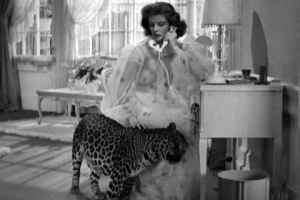
The argument has now evolved as the ‘manic pixie dream girl’ has spread like some kind of infectious disease to the far corners of cinema until all girls with dyed hair who play the ukulele can be considered under-developed man-crutches. Ironically, it seems that just like the characters being highlighted, the title of the ‘Manic Pixie Dream Girl’ has become a little bit lazy and generalised. Now any female character described as “quirky” or “different” send the MPDG alarm bells ringing and when Annie Hall’s (1977) Diane Keaton is being thrown into the same category as Daryl Hannah’s mermaid from Splash! (1984) we know something’s gone very, very wrong.
Here is the proposal I am making. Let’s reclaim these women of film whose inspirationally unique outlooks on life have been muddied by the ‘Manic Pixie Dream Girl’. These female characters can be described as quirky, kooky or just plain whimsical and may end up changing a man for the better but they aren’t about to apologise for it because it’s just a small part of who they are as interesting, developed characters.
8. Amelie Poulain – Amelie
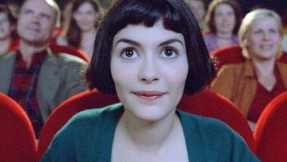 Her naivety and childlike sense of wonder can be a little too saccharine for some, especially when combined with the dreamy cinematography and elaborate set pieces of director Jean-Pierre Jeunet. But Amelie as a character is a beautiful example of a woman with a strong sense of justice, living for others. She understands how precious the small and sentimental moments in life can be to reveal the humanity in others through everyday acts of kindness. These range from reuniting an ageing man with a box of childhood trinkets to making up for her father’s missed opportunities to travel by sending his beloved gnome around the world. Although Amelie shows a lot of ingenuity when fixing the lives of those around her, it is a solitary existence and ultimately she must live her own life. Through Amelie we discover the importance of helping those around us but also finding the courage to reach out and grab the love and happiness we deserve.
Her naivety and childlike sense of wonder can be a little too saccharine for some, especially when combined with the dreamy cinematography and elaborate set pieces of director Jean-Pierre Jeunet. But Amelie as a character is a beautiful example of a woman with a strong sense of justice, living for others. She understands how precious the small and sentimental moments in life can be to reveal the humanity in others through everyday acts of kindness. These range from reuniting an ageing man with a box of childhood trinkets to making up for her father’s missed opportunities to travel by sending his beloved gnome around the world. Although Amelie shows a lot of ingenuity when fixing the lives of those around her, it is a solitary existence and ultimately she must live her own life. Through Amelie we discover the importance of helping those around us but also finding the courage to reach out and grab the love and happiness we deserve.
7. Marjane ‘Marji’ Satrapi – Persepolis
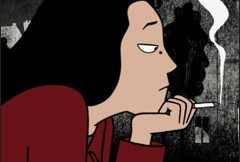 As a young woman growing up during the Iranian revolution of the 1970’s, Marjane Satrapi experienced life under not one, but two oppressive regime’s. These real-life experiences were made into a graphic novel before becoming 2007’s animated feature film. Marjane looked on as her liberties and loved ones disappeared around her and chooses to rebel. She loudly protests around her living room as a little girl before bedtime, where she engages in late night discussions with God and Karl Marx. As a teenager she embraces the forbidden fruits of western culture, head banging to Iron Maiden.
As a young woman growing up during the Iranian revolution of the 1970’s, Marjane Satrapi experienced life under not one, but two oppressive regime’s. These real-life experiences were made into a graphic novel before becoming 2007’s animated feature film. Marjane looked on as her liberties and loved ones disappeared around her and chooses to rebel. She loudly protests around her living room as a little girl before bedtime, where she engages in late night discussions with God and Karl Marx. As a teenager she embraces the forbidden fruits of western culture, head banging to Iron Maiden.
She is strong willed and believes in the the rights of her fellow Iranians to speak out against their Islamic Fundamentalist government even if it means risking her life. in She cannot return home after fleeing to Vienna but finds the student activists around her completely superficial and naive. The hardship of being in exile from her home and family forces her to find herself. A proud, intelligent Iranian woman who chain smokes and dances to the music of Michael Jackson but more importantly understand the true value of womanhood and freedom which she won’t compromise for any man or regime.
6. Pauline ‘Poppy’ class – Happy-Go-Lucky
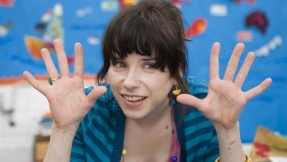 After the many gritty, kitchen sink dramas that made his name, Mike Leigh wanted to make a film that was ‘anti-miserabalist’ but maintained the realism he’s known for. The character of Poppy Cross (Sally Hawkins) is completely different from the female characters seen in his previous films. A happy-go-lucky primary school teacher from North London whose shiny outlook is a ray of sunshine in a world of grey. Her life’s purpose is to turn the world’s frown upside down which can be both intriguing and confusing to those around her. This unconventional lifestyle often sees her at odds with those who believe a woman in her thirties should be less free-spirited, especially her domesticated older sister.
After the many gritty, kitchen sink dramas that made his name, Mike Leigh wanted to make a film that was ‘anti-miserabalist’ but maintained the realism he’s known for. The character of Poppy Cross (Sally Hawkins) is completely different from the female characters seen in his previous films. A happy-go-lucky primary school teacher from North London whose shiny outlook is a ray of sunshine in a world of grey. Her life’s purpose is to turn the world’s frown upside down which can be both intriguing and confusing to those around her. This unconventional lifestyle often sees her at odds with those who believe a woman in her thirties should be less free-spirited, especially her domesticated older sister.
The real world constantly challenges her outlook yet she remains upbeat, even when faced with a driving instructor that turns out to be an crazed, sociopath. For those people that respond to the quirky girls of cinema with an eye-roll and a “p-er-leez”, Poppy’s vibrant wardrobe of clothing and her sparky personality may seem too much. Be that as it may, give Poppy a chance and she may eventually make you question whether a life of negativity is really worth the bother.
5. Clementine Kruczynski – Eternal Sunshine of the Spotless Mind
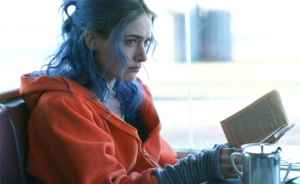 It takes a particular kind of individual to have paid professionals erase your memory after a relationship goes sour and Clementine Kruczynski isn’t a woman you forget easily. Considering her constantly changing hair colour, spontaneity and choice of needy men, you could be forgiven for considering Kate Winslet’s fiery role to be a classic example of a MPDG. However, the writer- director duo of Michel Gondry and Charlie Kaufman allow us to see right into the heart of the relationship between her and Joel (Jim Carrey). They are two real, complicated individuals who love one another but struggle with everything that comes with it. Clementine is different, quirky and impulsive but highly flawed, telling Joel at the beginning of their relationship “I’m just a fucked up girl who’s lookin’ for my own piece of mind; don’t assign me yours”. Clementine is a character who makes questionable choices in life and love, that may or may not pay off but she’s damn sure not going to apologise for them.
It takes a particular kind of individual to have paid professionals erase your memory after a relationship goes sour and Clementine Kruczynski isn’t a woman you forget easily. Considering her constantly changing hair colour, spontaneity and choice of needy men, you could be forgiven for considering Kate Winslet’s fiery role to be a classic example of a MPDG. However, the writer- director duo of Michel Gondry and Charlie Kaufman allow us to see right into the heart of the relationship between her and Joel (Jim Carrey). They are two real, complicated individuals who love one another but struggle with everything that comes with it. Clementine is different, quirky and impulsive but highly flawed, telling Joel at the beginning of their relationship “I’m just a fucked up girl who’s lookin’ for my own piece of mind; don’t assign me yours”. Clementine is a character who makes questionable choices in life and love, that may or may not pay off but she’s damn sure not going to apologise for them.
4. Older Sister – Dogtooth (Kynodontas)
 It would be hard not to grow up an oddball if you were kept in complete isolation from the outside world, with parents who control your every movement and only your two siblings for company. ‘Older sister’ as she is only ever referred to is taught that a Zombie is a ‘small yellow flower’ and is convinced that airplanes are tiny toys that fall from the sky. After growing up under her parents special brand of dictatorship she finds ways to express herself and discover her own identity. In a state of childlike ignorance she dances, hits people with hammers and carries out sexual favours for a VHS copy of Rocky IV. Even through all of this madness and dysfunction she is still an inspirational, free-spirit. The dogtooth of the title refers to the children’s canines that they are told will fall out when they are finally ready to leave home. Unlike her siblings she comes to believe she’s ready for the outside world and all she has to do is wait for her dog teeth to fall out, or give them a little encouragement…
It would be hard not to grow up an oddball if you were kept in complete isolation from the outside world, with parents who control your every movement and only your two siblings for company. ‘Older sister’ as she is only ever referred to is taught that a Zombie is a ‘small yellow flower’ and is convinced that airplanes are tiny toys that fall from the sky. After growing up under her parents special brand of dictatorship she finds ways to express herself and discover her own identity. In a state of childlike ignorance she dances, hits people with hammers and carries out sexual favours for a VHS copy of Rocky IV. Even through all of this madness and dysfunction she is still an inspirational, free-spirit. The dogtooth of the title refers to the children’s canines that they are told will fall out when they are finally ready to leave home. Unlike her siblings she comes to believe she’s ready for the outside world and all she has to do is wait for her dog teeth to fall out, or give them a little encouragement…
3. Maude – Harold and Maude
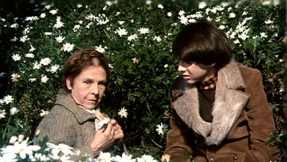 To classify Maude (Ruth Gordon) as anything other than a beacon of hope for all humanity would be a crime to cinema. Yes, she is a redeeming love interest to the lost, morbid young Harold but she is also 79 and has lived through some of the worst moments of the early 20th century, including a Nazi concentration camp. This tiny, wrinkled woman has an insatiable lust for life. She steals hursts and police motor bikes because she doesn’t believe in owning things. She’s a liberator of canaries, urban trees and teenage boys because no-one should have to live in a cage.
To classify Maude (Ruth Gordon) as anything other than a beacon of hope for all humanity would be a crime to cinema. Yes, she is a redeeming love interest to the lost, morbid young Harold but she is also 79 and has lived through some of the worst moments of the early 20th century, including a Nazi concentration camp. This tiny, wrinkled woman has an insatiable lust for life. She steals hursts and police motor bikes because she doesn’t believe in owning things. She’s a liberator of canaries, urban trees and teenage boys because no-one should have to live in a cage.
Her carpe diem ideology came after the hippie revolution of the 1960’s had gone up in the smoke of a recently napalmed vietnamese village. After all the idealism had faded, the character of Maude provided guidance to not just one disillusioned youth but an entire generation of 70’s youngsters and her pearls of wisdom are still relevant today. If you were to look upon her character as a convenient life affirming figure who is only there to teach Harold the banjo and how to live, you wouldn’t be too far off. However, you’d be missing the point and if Maude has taught us anything it’s that the bigger picture is far more interesting.
2. Annie Hall – Annie Hall
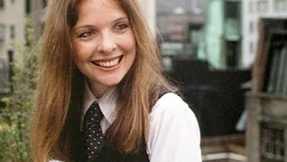 Annie Hall may just be the greatest romantic comedy of all time and Diane Keaton’s take on the eponymous Annie deserves a sizeable slice of the credit. Initially the audience, just like Woody Allen’s character, Alvy singer, are charmed by Annie’s unusual dress sense and her ditzy ‘la-di-da’ way of speaking. After Looking a little closer you find that Annie is a deeply compelling and fully realised character who we see evolve over the course of her and Alvy’s relationship. As people we are constantly having experiences that help us grow, change and re-consider our goals in life. Alvy helps contribute during a point in Annie’s life where she’s getting her shit together, encouraging her to start seeing a shrink and to pursue a singing career. Alvy shapes her life just as Annie helps shape his approach to relationships and his ‘most of us need the eggs” philosophy. At the movies conclusion, we are left to consider why we choose to put ourselves through the rigmarole of love over and over. It’s probably because of people like Annie Hall.
Annie Hall may just be the greatest romantic comedy of all time and Diane Keaton’s take on the eponymous Annie deserves a sizeable slice of the credit. Initially the audience, just like Woody Allen’s character, Alvy singer, are charmed by Annie’s unusual dress sense and her ditzy ‘la-di-da’ way of speaking. After Looking a little closer you find that Annie is a deeply compelling and fully realised character who we see evolve over the course of her and Alvy’s relationship. As people we are constantly having experiences that help us grow, change and re-consider our goals in life. Alvy helps contribute during a point in Annie’s life where she’s getting her shit together, encouraging her to start seeing a shrink and to pursue a singing career. Alvy shapes her life just as Annie helps shape his approach to relationships and his ‘most of us need the eggs” philosophy. At the movies conclusion, we are left to consider why we choose to put ourselves through the rigmarole of love over and over. It’s probably because of people like Annie Hall.
1. Summer Finn – (500) Days of Summer
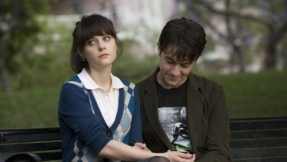 Placing Summer Finn as number one may be considered quite the controversial choice seeing as she is played by none other than Zooey Deschanel, the highly divisive, queen of kooky herself and yet this character may be the final nail in the coffin of the Manic pixie dream girl phenomena. Summer is “different”, she loves Ringo Starr because no-one else seems to and is carefree enough to shout “Penis!” around small children in a public park. She is everything the a young romantic like Tom Hansen, (Joseph Gordon Levitt) the film’s protagonist, could hope for in a dream love interest. However, just as quirky female characters have suffered at the hand of the MPDG trope, Summer is burdened with the high expectations of Tom. Joseph Gordon Levitt has criticised his character saying “he develops a mildly delusional obsession over a girl on to whom he projects all these fantasies. That’s not healthy. That’s falling in love with the idea of a person, not the actual person”.
Placing Summer Finn as number one may be considered quite the controversial choice seeing as she is played by none other than Zooey Deschanel, the highly divisive, queen of kooky herself and yet this character may be the final nail in the coffin of the Manic pixie dream girl phenomena. Summer is “different”, she loves Ringo Starr because no-one else seems to and is carefree enough to shout “Penis!” around small children in a public park. She is everything the a young romantic like Tom Hansen, (Joseph Gordon Levitt) the film’s protagonist, could hope for in a dream love interest. However, just as quirky female characters have suffered at the hand of the MPDG trope, Summer is burdened with the high expectations of Tom. Joseph Gordon Levitt has criticised his character saying “he develops a mildly delusional obsession over a girl on to whom he projects all these fantasies. That’s not healthy. That’s falling in love with the idea of a person, not the actual person”.
Summer Finn’s 60’s haircut and unconventional approach to life may rub some people up the wrong way for the exact same reason she charms others, including Tom. Ultimately, Summer is just looking for a little happiness and doesn’t find it with Tom as we learn there’s more than one side to every relationship, just as there can be more to a quirky female character than an outlandish choice of hat.
We need tropes; tropes are a good thing. When films bombard us with important plot information they are a quick and easy character profile. They are also the bread and butter of websites such as this one which thrive on a good, meaty film discussion. So that’s how we should treat them, as handy tools for debate not lazy generalisations to disregard entire areas of film. These whimsical females are just a small selection of characters who have fallen victim to a cinematic trope gone rogue. It’s up to us to put an end to the madness. Next time you find yourself watching a film and suspect there’s a MPDG on screen, ask yourself if it’s really justified and then feel free to go on the internet and get the debate going.
What do you think? Leave a comment.











Great article. I’m always surprised when people criticize 500 Days of Summer for being a Manic Pixie Dream Girl movie, because for me it has always been about setting up that character then pulling the rug out from under the viewer and revealing that we’ve only been seeing Tom’s inaccurate memories of her, and not the real person. All the others you mentioned are perfect examples as well!
Last Saturday night was pretty much incredible: there’s a new drive-in theater in my city (first one in many years) and I went for the very first time, with my girlfriend to see Annie Hall on the big screen (for the very first time). It blew my mind. It has everything. It is Allen’s masterpiece, by far. And I have to thank my girlfriend since without her almost new love for Allen I would have not been watching this.
Great article that highlights some eclectic, well-written female characters. I’d take it a step further to say that the MPDG trope is useless and contributes absolutely nothing to our understanding of cinema. Like Mulvey’s gaze theory, it works for maybe one or two films (if you really want to stretch it), but then it falls apart. If anything, it says more about the critic who coined it than the films themselves.
Very nice article, and relevant in the wake of Laurie Penny’s article in New Statesman (http://www.newstatesman.com/lifestyle/2013/06/i-was-manic-pixie-dream-girl), which has been making some well-deserved waves.
I don’t fully agree on all of your examples, but the majority of them do peel away those superficial layers to reveal characters, rather than mere functions.
Your number one pick is almost perfect; practically a direct satire of the MPDG trope. I couldn’t think of a better demonstration of how damaging it can be when life imitates art, which it invariably does, and we invariably do.
It’s an important trope to identify, because not only is it plain lazy writing, it is also (like most tropes about women, or even gender tropes in general) culturally damaging. The unfortunate fact is that for every wonderful, three-dimensional Annie Hall, there are a thousand two-dimensional Trinities, which exist only to motivate the male protagonist. It’s important to keep calling this BS out, because that’s the only way we can hope to make a change.
Thanks for the link, Laurie Penny’s article is so relevant and quite moving, plus I also play the “fucking ukulele”. I’ve only just started to properly consider, even from writing this article, the extent to which popular culture has shaped my identity and any persons’ growing up in relation to gender as just one aspect. A trope such as this one that carries so much weight in the ongoing gender equality/representation debate shouldn’t be just shrugged off.
Really glad to see Summer Finn at number one! So many people fail to realise that her character is being deliberately and problematically represented as a MPDG so the narrative can subvert the trope itself.
Persopolis and Amelie are two films I reckon everyone should watch atleast once, nice article.
I was with you all the way to (500) Days of Summer, which I do find to be a bit one-sided. Levitt might criticize his character, but the film – as far as I can tell – does not. It tells his story, not hers, and ultimately rewards his fantasy by providing the new love interest at the end. It still bugs me.
Annie Hall, meanwhile, remains my favorite Woody Allen film; and I think Happy-Go-Lucky is incredibly underrated. I think the key here, as you identify, is that these women are fully developed characters, while the ‘manic pixie dream girl’ is a trope.
Great article.
I love that Summer was number one. Whilst she seemed to bring the MPDG to the forefront of pop culture I agree that her character did seem to parody they are often treated. I also love your inclusion of Happy-Go-Lucky, such a gem! Great writing!
You should consider Ruby Sparks. Written by a woman about a man’s attempt to create and control a MPDG who turns out to be way too complex (a.k.a real).
I really enjoyed this article…I think Clementine is a great example of a character that is far more substantive than either Dunst or Portman’s characters.
I also think that as much as we talk about how tropes can be damaging (and in some cases I do think they are), you’re right: the vehicles of film and TV need tropes as a device to give context to an audience!
“Amelie” and “Eternal Sunshine” are two of my favourite films, I used to include “500 Days” in that list too but I have watched it way too many times! I’d also forgotten how much I love “Happy Go Lucky” until I read this, may have to re-watch that again soon and feel all nostalgic! Perhaps I really just like this type of character…but as you said with Amelie it’s just a naiveness and innocence that intrigues me.
Great Article!! There are a few I didn’t know or recognize, but the ones I did more than appropriately fit this list. Very interesting concept and fantastic read.
I enjoyed this article! Interesting perspective on the manic pixie dream girl stereotype.. and now I know of a few movies that I really should see soon.
Most characters on your list still feel a bit contrived and deliberately “likable” for me. Although, I like the thought process behind your list of formidable “pixies.” And I appreciate your mention of Persepolis. To your list, I might also add Liza Minelli as “Sally Bowles” and possibly even Mary Steward Masterson as “Joon” (accompanied by Jonny Depp as “MPDB”).
I love your article, and completely agree with you! Especially liked to see mentioned Katharine Hepburn in “Bringing Up Baby”: I adore that movie, but I feel like it is not really known, unfortunately.
Donna Sheridan (Lily James)- Mamma Mia
Appreciate the article. I found my way here via “Splash” and “Stargirl” (Disney movie). It seemed both these female leads were on an almost mystical quest to find and help their brooding man. There was almost an alien angle, like a “mission to earth”. But both characters needed a lot of help themselves because they were naive, so the stories tended to be more balanced i.e. in the giving/receiving sense. Not one way relationships but ones in which each partner contributed necessary support. I argue this makes them not MPDG s in the classic sense. Grace VanderWaal and Daryl Hannah are both modelesque in their beauty, and Grace may find herself having to fight off the trope haters in the future. Her decision to star in the Disney movie had nothing to do with the trope, as her character goes through more changes than her male lead.
At nearly every big life stage, I’ve gone back and watched 500 Days of Summer. Not only because its a great movie that transcends normal rom-com tropes (although that still remains!), but also because the film reflects a new meaning every time I rewatch. At the age of 13, the first time I watched the film, obviously hormonal and boy obsessed, I agreed with everything Tom spurted out his pretty little mouth. His love flipped hatred towards Summer midway through the film seemed just – she HAD led him on, it WAS all her! But then, I watched it again at 16 – and I started to question whether Tom was all that. Didn’t Summer say she wasn’t looking for anything? She was quite upfront about her intentions, right? Now, at 19 was when I had the biggest flip, and after watching it I seethed at Tom’s reaction towards them breaking up. I personally had just gone through my first relationships end, and so any rom-com was my go to. And boy oh boy did Tom have it coming. I despised his nice guy attitude, his soft sad boy persona and his anger when they parted. How dare he? But I think the reason I hated him so much, was because I saw a part of him in me – I had begun to despise the things I enjoyed about my ex when we were together, and I hated myself for that. At 22, I watched it once more, and I’ve got to say, we’ve reached a happy medium. I don’t hate Tom, or Summer – they’re human and they both made mistakes during and after the relationship. I could go on about this film but I’m going to cut it short (this is the short version :/) – the beauty of this film lays within its nuanced reality, and its ability to adapt and change with you throughout your life.
Another perishable list…